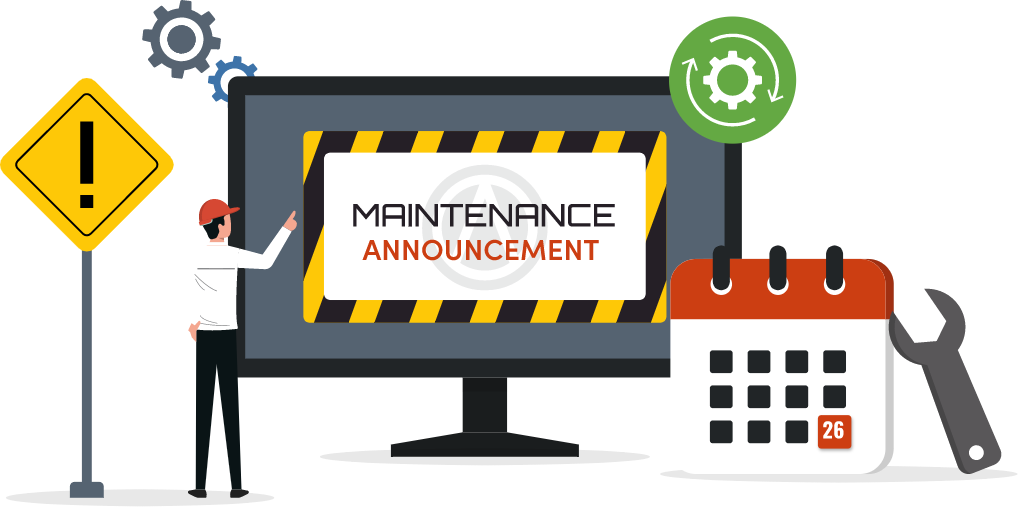Why is a tip-out system important?
A clear tip-out system promotes fairness, transparency, and team cohesion. It also reduces payroll disputes, increases employee satisfaction, and ensures compliance with federal and state labor laws.
5 Proven Methods to Manage Tip Outs in Your Restaurant
Overview
Managing tip outs is more than just a financial task - it's a cornerstone of your restaurant's culture and operational success. In fact, nearly half (47%) of restaurant employees who receive tips report feeling positive about the current tipping culture, highlighting the importance of a well-structured system.
However, when tip distribution is unclear or inconsistent, it can lead to frustration, disputes, and even turnover. A transparent and fair tip-out system not only ensures compliance with labor laws but also fosters a positive work environment where every team member feels valued for their contribution.
Basics and Responsibilities

Before implementing a tip-out system, it's essential to understand what tip outs are and why they matter. A tip out is the portion of tips that front-of-house employees, such as servers and bartenders, distribute to support staff like bussers, hosts, and barbacks. It ensures that everyone who contributes to a guest's experience is recognized and compensated fairly.
According to industry data, restaurants with clearly defined tip-out procedures report 25-30% fewer payroll disputes compared to those without structured systems. This underscores the importance of establishing a process that is transparent, consistent, and documented. Without a formal approach, misunderstandings can arise over how much each role should receive, which can erode trust and team morale.
As an owner, you're responsible for both compliance and fairness. Legally, tip-outs must comply with federal and state labor laws, including minimum wage and overtime regulations. Tips are considered the property of employees, and mismanagement can lead to fines or employee grievances. Maintaining accurate records of tip calculations and distributions is not just a best practice - it's a legal safeguard.
Transparency is equally important for maintaining team cohesion. Clearly communicating how tips are calculated, when they are distributed, and which roles participate in the system reduces confusion and builds trust. By understanding these basics and responsibilities, you lay the groundwork for choosing a tip-out method that balances fairness, simplicity, and operational efficiency.
Method 1. Percentage-Based Tip Outs
Percentage-based tip outs are one of the most common methods used in restaurants due to their simplicity and predictability. In this system, a server or bartender distributes a fixed percentage of their tips to other roles, such as bussers, hosts, or barbacks. For example, a typical arrangement might have servers tip out 3-5% of their total sales to the bartender and 2% to support staff.
The primary advantage of this method is its straightforward calculation. It scales automatically with sales and tip volume, which makes it easier to implement for daily or weekly distribution. It also provides a predictable amount for support staff, which can reduce misunderstandings and disputes. According to restaurant payroll surveys, over 60% of fine-dining establishments use a percentage-based approach, largely because it's easy to explain and monitor.
However, percentage-based tip outs can sometimes favor higher-earning positions. For instance, if one server consistently earns larger tips due to section assignments or table flow, support staff may receive unequal amounts compared to colleagues serving slower sections. Additionally, this method may not account for variations in effort between staff roles, potentially leaving some team members feeling under-compensated.
To implement effectively, clearly document the percentage allocations, communicate them to all staff, and consistently review the system to ensure it aligns with your restaurant's operational goals and fairness standards. A simple formula - Tip Out = Total Tips x Allocated Percentage - keeps calculations transparent and manageable.
Method 2. Points-Based Tip Outs
The points-based tip-out method offers a more nuanced approach to distributing tips fairly among staff members. Unlike percentage-based systems, points-based allocations assign a numerical value to each role based on responsibilities, effort, and contribution to service. For example, a busser might be assigned 1 point, a host 2 points, and a bartender 3 points. Tips are then divided proportionally according to the total points.
One key advantage of this system is that it recognizes the different levels of effort and skill required for each role. By quantifying contributions, it helps ensure that support staff feel adequately rewarded for their work. This can boost morale and foster teamwork, as employees see a tangible link between their effort and their earnings. Data from industry surveys shows that restaurants using points-based systems report higher staff satisfaction scores, with up to 20% improvement in perceived fairness.
The primary challenge of points-based tip outs is the calculation complexity. Owners and managers need to track points, calculate total tip pools, and determine each individual's share. This requires consistent documentation and clear communication to prevent misunderstandings. To implement, first assign points to each role, calculate the total points, and then distribute tips proportionally. A simple formula is -
Individual Tip Share = (Role Points / Total Points) x Total Tip Pool
By maintaining transparency and consistency, the points-based system provides a fair and data-driven approach that aligns staff rewards with their contributions, especially in restaurants with multiple support roles.
Method 3. Pooled Tip System

A pooled tip system, sometimes called tip pooling, combines all tips collected by front-of-house staff into a central pool, which is then distributed among eligible employees according to a predetermined formula. This approach ensures that everyone who contributes to the guest experience - servers, bartenders, bussers, and hosts - receives a share of the total tips, regardless of who directly served the table.
The main advantage of a pooled system is that it encourages teamwork and collaboration. Since employees' earnings are tied to the overall performance of the team, everyone has a shared incentive to support one another and maintain consistent service quality. Research indicates that restaurants with structured tip pools experience a measurable reduction in disputes over tip distribution, with some reporting up to a 30% decrease compared to unstructured systems.
However, pooled tip systems require trust and clear communication. Some staff may feel that their individual efforts are not fully recognized, especially if contributions vary significantly between roles. To mitigate this, restaurants often implement formulas that weight shares based on role, hours worked, or a points system, combining fairness with simplicity.
For example, a simple formula might be -
Individual Share = (Role Weight x Hours Worked / Total Weighted Hours) x Total Tip Pool
By maintaining transparency, consistently applying the formula, and clearly communicating how the pool works, restaurant owners can implement a tip-pooling system that balances fairness, efficiency, and employee satisfaction.
Transform The Way You Manage Tips!
Manage and Distribute Tips Seamlessly with Altametrics
Method 4. Hybrid Systems
Hybrid tip-out systems combine elements from multiple methods, such as percentage-based, points-based, and pooled systems, to create a tailored solution that fits a restaurant's unique operational needs. This approach allows owners to balance simplicity, fairness, and recognition of individual effort, addressing the limitations of any single system.
For example, a hybrid system might use a pooled tip approach for support staff while maintaining a percentage-based distribution among servers and bartenders. Alternatively, points could be applied within the pooled system to weight shares according to each role's responsibilities. This flexibility makes hybrid systems particularly suitable for restaurants with varied roles, multiple shifts, or high variability in customer traffic.
The key advantage of hybrid systems is adaptability. By combining methods, you can account for differences in effort, experience, and contribution while keeping calculations manageable. Data from industry surveys shows that restaurants adopting hybrid models report higher staff satisfaction scores and lower turnover, suggesting employees value a system perceived as both fair and transparent.
The main challenge lies in administrative complexity. Hybrid systems require careful documentation, clear communication, and consistent application to avoid confusion. To implement effectively, outline which components of each method will be used, calculate the distributions step by step, and regularly review the system to ensure fairness.
A hybrid approach, when executed thoughtfully, provides the flexibility to reward all staff equitably while maintaining operational efficiency and compliance with labor regulations.
Method 5. Automated or POS-Integrated Tip Outs
Technology has transformed how restaurants manage tip distribution. Automated or POS-integrated tip-out systems calculate and allocate tips directly through point-of-sale software or payroll platforms. These systems remove the guesswork, reduce manual errors, and ensure that employees receive accurate payments consistently.
One significant advantage of automation is time savings. Instead of managers manually calculating tip-outs for multiple roles or shifts, the system computes distributions instantly, often down to the exact dollar. This minimizes disputes over math errors and allows staff to receive their earnings promptly. According to industry reports, restaurants using automated tip-out systems reduce payroll errors by up to 80%, demonstrating both accuracy and reliability.
Additionally, automated systems help maintain compliance with federal and state labor regulations. Built-in features can track hours worked, role-specific allocations, and tip caps, ensuring that the restaurant adheres to minimum wage laws and tax reporting requirements. Transparency is also improved, as employees can access detailed reports showing how their share was calculated.
The primary consideration is cost and training. POS or payroll software with automated tip features often requires an upfront investment and staff onboarding to ensure smooth adoption. However, the long-term benefits - accuracy, efficiency, and trust among team members - typically outweigh the initial setup effort.
By leveraging technology, restaurant owners can implement a tip-out system that is precise, consistent, and scalable, freeing up managerial resources while fostering a sense of fairness among staff.
Choosing the Right Tip Out Method for Your Restaurant
Selecting the ideal tip-out method requires balancing fairness, simplicity, and operational efficiency. Start by evaluating your restaurant's team size, service style, and the complexity of roles. Smaller establishments with fewer roles may benefit from a percentage-based system for its simplicity, while larger teams or multi-shift operations may see better results from points-based or hybrid methods that account for varying responsibilities.
Consistency and transparency are key. Whichever method you choose, clearly document your policy, communicate it to all staff, and apply it uniformly across shifts. Regularly reviewing the system ensures it continues to reflect your team's structure and workload while preventing disputes. Data-driven adjustments, such as analyzing tip distribution patterns or employee satisfaction metrics, can guide improvements and maintain trust.
For restaurant owners seeking to streamline this process, technology can be a game-changer. Platforms like Altametrics simplify tip management by automating calculations, integrating with POS systems, and providing detailed reporting. This ensures accuracy, reduces administrative burden, and enhances transparency for your team. By leveraging a platform like Altametrics, you can focus on running your restaurant while maintaining a fair and efficient tip-out system that keeps your employees motivated and engaged.
Take the next step in optimizing your restaurant's tip management by clicking "Request a Demo" below.













